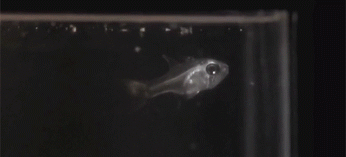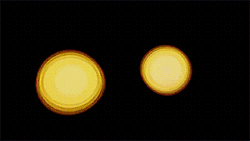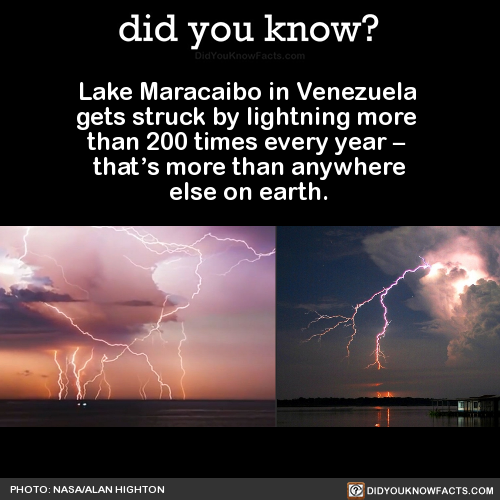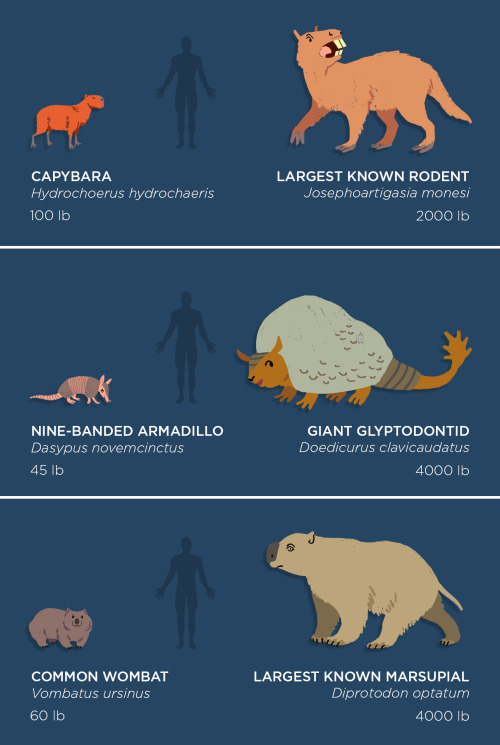Saients - How Cool Is That?

More Posts from Saients and Others

Please join the Department of Awesome Natural Phenomena as they marvel at the jaw-dropping sight of a ‘dirty thunderstorm’ taking place above Sicily’s Mount Etna during its latest eruption on December 3, 2015. Mount Etna is the tallest active volcano on the European continent.
A dirty thunderstorm, also known as volcanic lightning, is the result of electrical charges generated by the collision of rock fragments, ash, and ice particles in a volcanic plume. These collision produce a static charge in the same way that colliding ice particles do during regular thunderstorms.
Freelance photographer Marco Restivo captured this incredible image by combining a sequence of five separate photos.
Head over to The Huffington Post for timelapse video and additional images.
[via The Telegraph]
I would have aced biology if the teachers all taught the course like the narrator






Giant squids might be even bigger than we realized
According to research from Charles Paxton, fisheries ecologist and statistician at Scotland’s University of St. Andrews, published in the Journal of Zoology this month, the giant squid could grow to reach as much as 65 feet. But even that is a “conservative analysis,” as size could protect against their #1 predator.
Follow @the-future-now


A star created 1,800 years ago after the collision of two distant suns is set to appear in the night sky for the first time – as the light from the crash finally reaches the Earth.
Scientists predict that for six months in 2022, stargazers will be able to witness the birth of the new star, by fixing their telescopes near the Pisces and Cygnus constellations. Dubbed the Boom Star, it has taken nearly two millennia for its light to reach earth — where it will be able to be seen by the naked eye. Astronomers expect the collision to increase the brightness of the pair ten thousand fold, making it one of the brightest stars in the heaven for a time. The explosion, known as a Red Nova, will then dissipate and the star will remain visible in our skies as a single bright, but duller, dot.
Your not going to want to miss this appear in our sky as it’s a once in a lifetime event! Source

Lake Maracaibo in Venezuela gets struck by lightning more than 200 times every year – that’s more than anywhere else on earth. Source
Fve-miles above Lake Maracaibo, storm clouds gather up to 160 nights per year and can last for up to 10 hours.





-
 tench-wench69 liked this · 1 week ago
tench-wench69 liked this · 1 week ago -
 arwenslegacy reblogged this · 2 weeks ago
arwenslegacy reblogged this · 2 weeks ago -
 guy60660 liked this · 1 month ago
guy60660 liked this · 1 month ago -
 farknsorsi reblogged this · 1 month ago
farknsorsi reblogged this · 1 month ago -
 farknsorsi liked this · 1 month ago
farknsorsi liked this · 1 month ago -
 last-flight-of-dickarus liked this · 1 month ago
last-flight-of-dickarus liked this · 1 month ago -
 aymanetto liked this · 1 month ago
aymanetto liked this · 1 month ago -
 hey-slow-down-grab-the-rauhl liked this · 1 month ago
hey-slow-down-grab-the-rauhl liked this · 1 month ago -
 aimless-passerby liked this · 2 months ago
aimless-passerby liked this · 2 months ago -
 dikdikpronouncedxylophone liked this · 2 months ago
dikdikpronouncedxylophone liked this · 2 months ago -
 sevenfragmence liked this · 2 months ago
sevenfragmence liked this · 2 months ago -
 sleepydreameroncloud9 reblogged this · 3 months ago
sleepydreameroncloud9 reblogged this · 3 months ago -
 brebre0925 liked this · 3 months ago
brebre0925 liked this · 3 months ago -
 busta23 liked this · 3 months ago
busta23 liked this · 3 months ago -
 squeeb100 reblogged this · 3 months ago
squeeb100 reblogged this · 3 months ago -
 k9ok reblogged this · 4 months ago
k9ok reblogged this · 4 months ago -
 k9ok liked this · 4 months ago
k9ok liked this · 4 months ago -
 littlelemonme liked this · 4 months ago
littlelemonme liked this · 4 months ago -
 rebearka reblogged this · 4 months ago
rebearka reblogged this · 4 months ago -
 ai-meems liked this · 4 months ago
ai-meems liked this · 4 months ago -
 andfairydust liked this · 5 months ago
andfairydust liked this · 5 months ago -
 lashowtime11 reblogged this · 5 months ago
lashowtime11 reblogged this · 5 months ago -
 lashowtime11 liked this · 5 months ago
lashowtime11 liked this · 5 months ago -
 bmorebrstobss liked this · 5 months ago
bmorebrstobss liked this · 5 months ago -
 ch0f0rsh0w liked this · 6 months ago
ch0f0rsh0w liked this · 6 months ago -
 ransomnoteworthy liked this · 6 months ago
ransomnoteworthy liked this · 6 months ago -
 midnight-aura-star reblogged this · 7 months ago
midnight-aura-star reblogged this · 7 months ago -
 eros69xxx liked this · 7 months ago
eros69xxx liked this · 7 months ago -
 legendarydaimon liked this · 7 months ago
legendarydaimon liked this · 7 months ago -
 stonemen liked this · 7 months ago
stonemen liked this · 7 months ago -
 basileia-longrhn liked this · 7 months ago
basileia-longrhn liked this · 7 months ago -
 stubbornbliss liked this · 7 months ago
stubbornbliss liked this · 7 months ago -
 useyourblinker reblogged this · 7 months ago
useyourblinker reblogged this · 7 months ago -
 useyourblinker liked this · 7 months ago
useyourblinker liked this · 7 months ago -
 goblin-hoarder liked this · 7 months ago
goblin-hoarder liked this · 7 months ago -
 madvillaingt8 reblogged this · 7 months ago
madvillaingt8 reblogged this · 7 months ago -
 lilybug-02 liked this · 8 months ago
lilybug-02 liked this · 8 months ago -
 fresalita reblogged this · 8 months ago
fresalita reblogged this · 8 months ago -
 jseobgf liked this · 8 months ago
jseobgf liked this · 8 months ago -
 geceaforizmasi reblogged this · 9 months ago
geceaforizmasi reblogged this · 9 months ago -
 eathotchip-and-bi liked this · 9 months ago
eathotchip-and-bi liked this · 9 months ago -
 discordphoenix liked this · 9 months ago
discordphoenix liked this · 9 months ago -
 m-b1z liked this · 9 months ago
m-b1z liked this · 9 months ago -
 alt-menu reblogged this · 9 months ago
alt-menu reblogged this · 9 months ago -
 alt-menu liked this · 9 months ago
alt-menu liked this · 9 months ago -
 n3luc reblogged this · 9 months ago
n3luc reblogged this · 9 months ago -
 n3luc liked this · 9 months ago
n3luc liked this · 9 months ago -
 p3ss1n liked this · 10 months ago
p3ss1n liked this · 10 months ago -
 tinydracolisk liked this · 10 months ago
tinydracolisk liked this · 10 months ago
Stardate: 2258.42...or, uh, 4... Whatever. Life is weird, at least we've got science.
75 posts


